Fix Windows Update Error 0x80240034
Get Free Scanner and check your computer for errors
Fix It NowTo fix found issues, you have to purchase the full version of Combo Cleaner. Free trial available. Combo Cleaner is owned and operated by Rcs Lt, the parent company of PCRisk.com read more.
6 Ways to Fix Windows Update Error 0x80240034 on Windows 10
Updates are an essential part of the Windows 10 operating system. However, by checking for updates manually, you may see some updates failing to install, resulting in error 0x80240034. This article will help you fix this error.
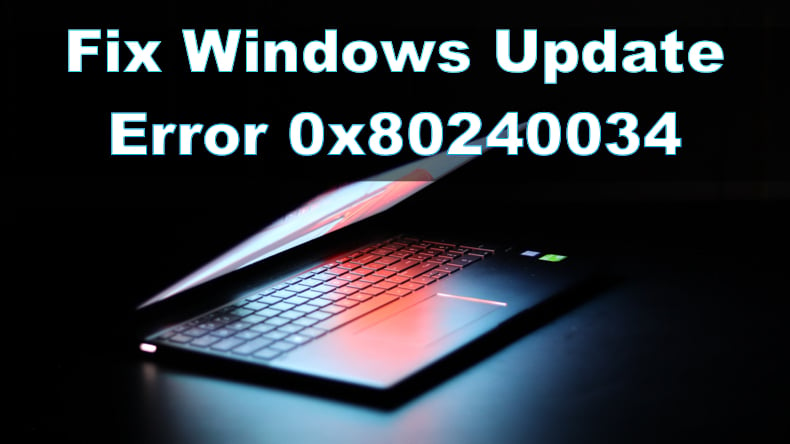
What Causes Error 0x80240034?
- Firstly, error 0x80240034 may be caused by missing or corrupted system files. It may also occur due to a corrupted update file (WU_E_DOWNLOAD_FAILED).
- Secondly, error 0x80240034 may occur due to a driver or hardware conflict.
- Thirdly, error 0x80240034 may occur if the developer mode is enabled on your PC.
Sometimes, this error may occur due to the fault of Microsoft releasing a buggy update. Error 0x80240034 may also occur if your Internet connection or the connection to Microsoft's update servers was interrupted.
In a case like that, there's little you can do apart from trying to install the problematic update by downloading it from the Windows Update catalog manually.
Video on How to Fix Windows Update Error 0x80240034
Table of Contents:
- Introduction
- Solution 1. Run Windows Update Troubleshooter
- Solution 2. Use Windows 10 Update Assistant
- Solution 3. Clear Windows Update Cache Folder (Delete SoftwareDistribution Folder)
- Solution 4. Run Deployment Imaging and Servicing Management (DISM) Scan
- Solution 5. Run System File Checker (SFC) Scan
- Solution 6. Reset Windows Update Components
- Video on How to Fix Windows Update Error 0x80240034
Download Computer Malware Repair Tool
It is recommended to run a free scan with Combo Cleaner - a tool to detect viruses and malware on your device. You will need to purchase the full version to remove infections. Free trial available. Combo Cleaner is owned and operated by Rcs Lt, the parent company of PCRisk.com read more.
Solution 1. Run Windows Update Troubleshooter
Windows Update Troubleshooter was designed to fix various update-related issues, so try running it first before moving to more advanced solutions.
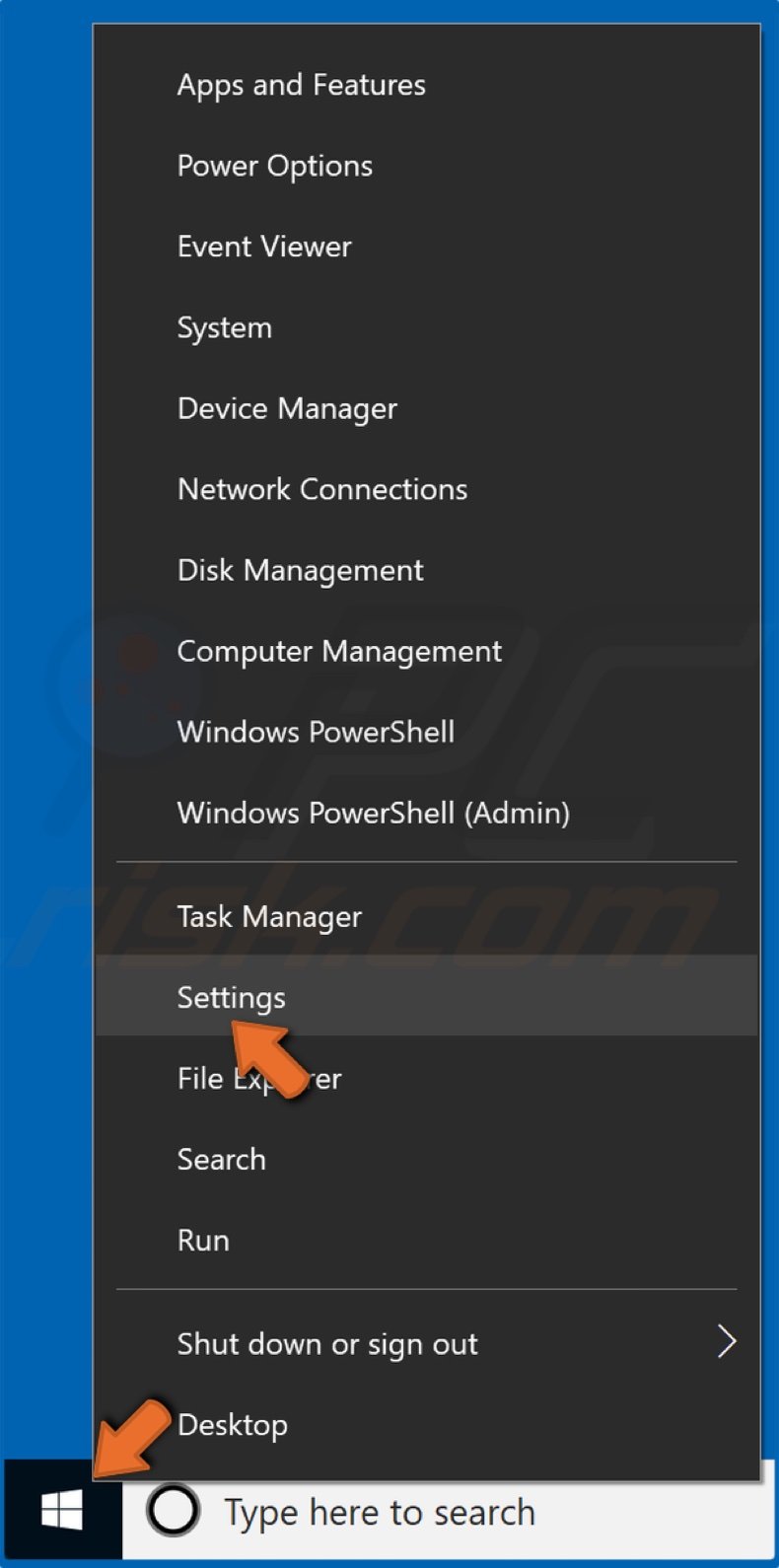
1. Right-click the Start Menu button and select Settings.
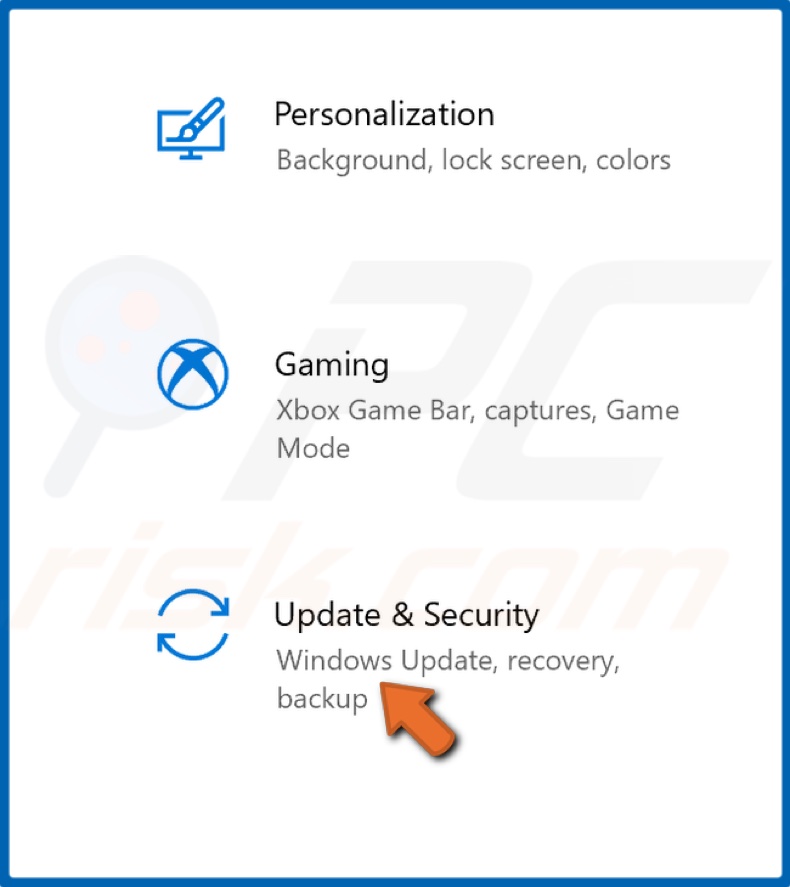
2. Select Update & Security.
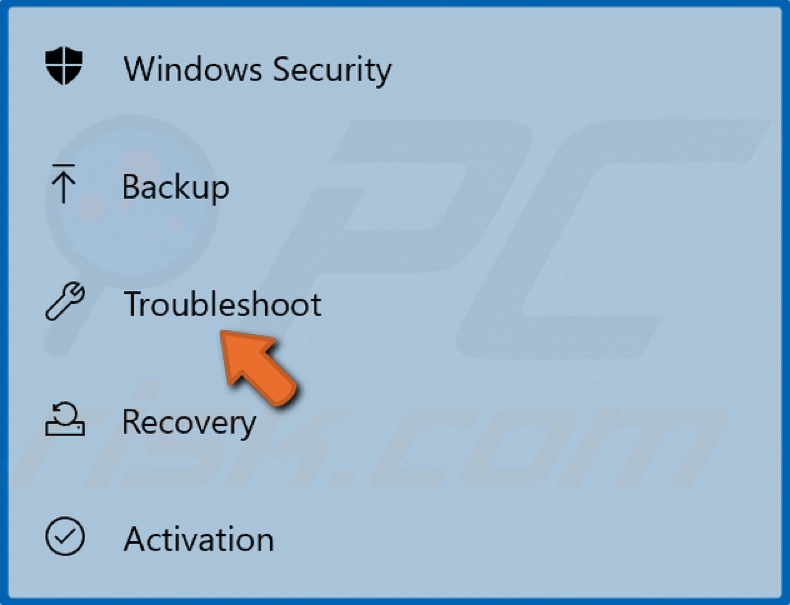
3. Select Troubleshoot in the left pane.
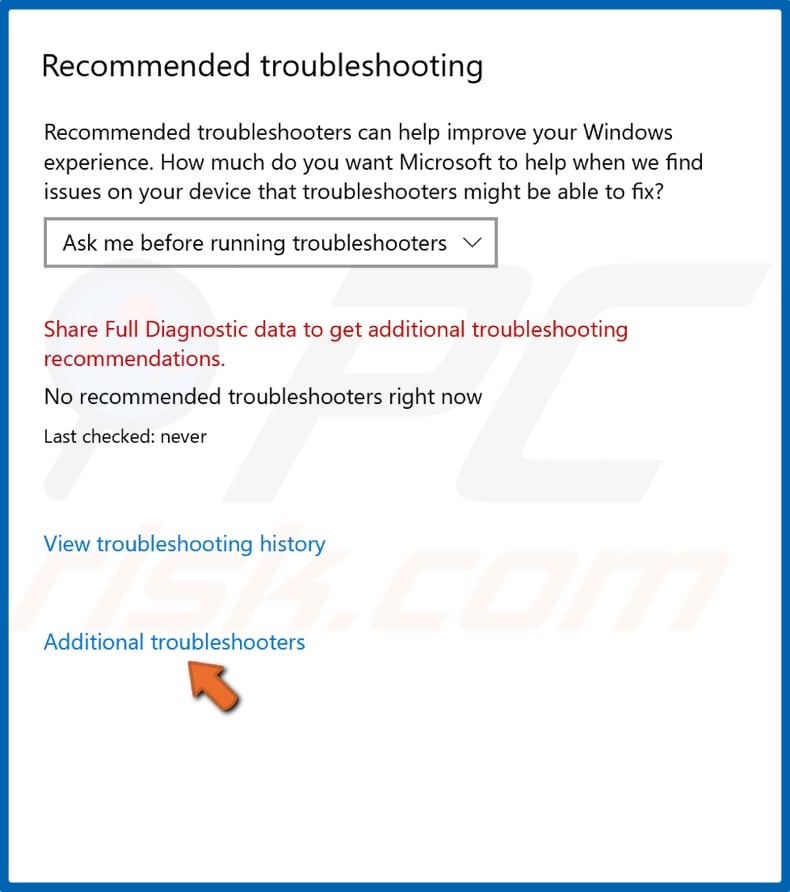
4. Click Additional troubleshooters in the right pane.
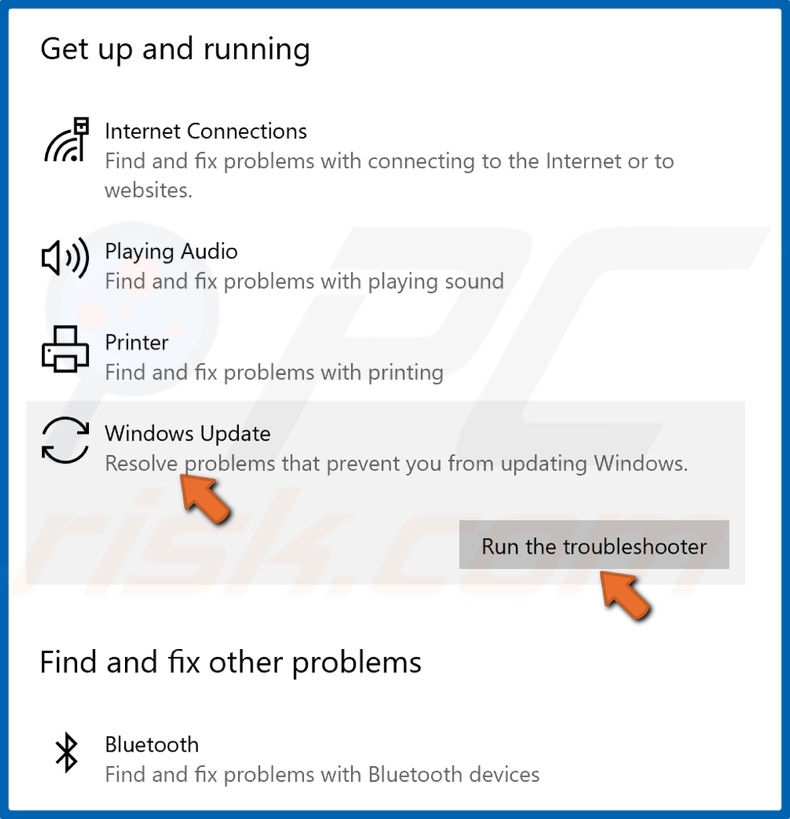
5. Select Windows Update and click Run the troubleshooter.
6. The troubleshooter will identify the issue and apply a fix automatically.
Solution 2. Use Windows 10 Update Assistant
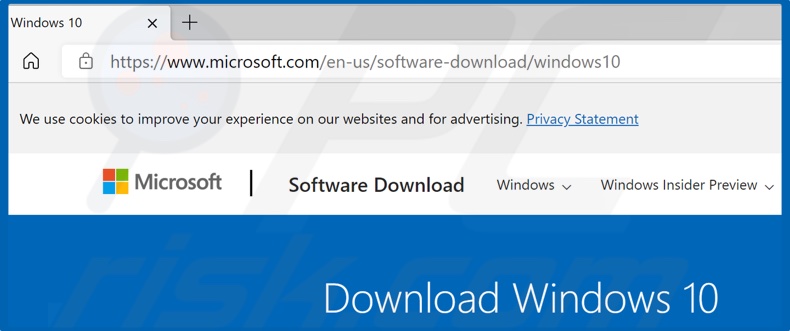
1. Open your web browser and go to the Windows 10 Update Assistant download page.
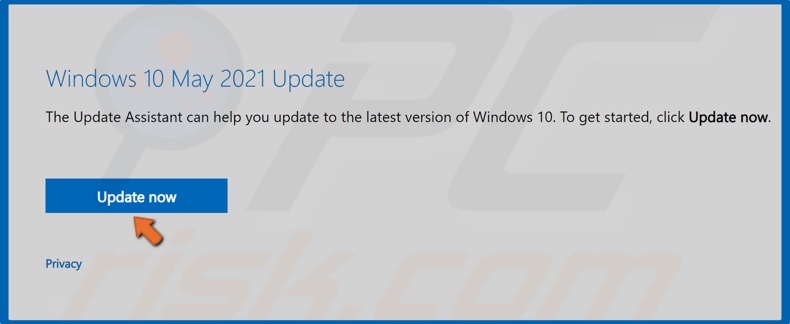
2. Click Update now to download the Windows 10 Update Assistant.
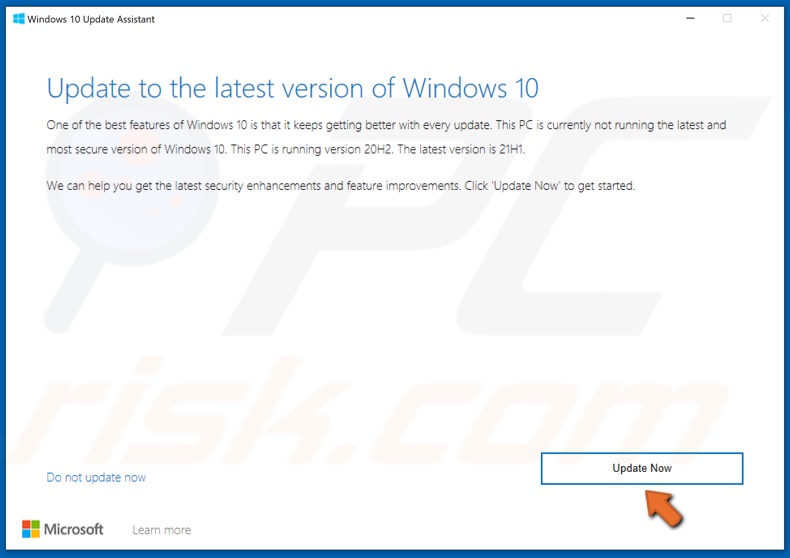
3. Run the Update Assistant.
4. Then, click Update Now.
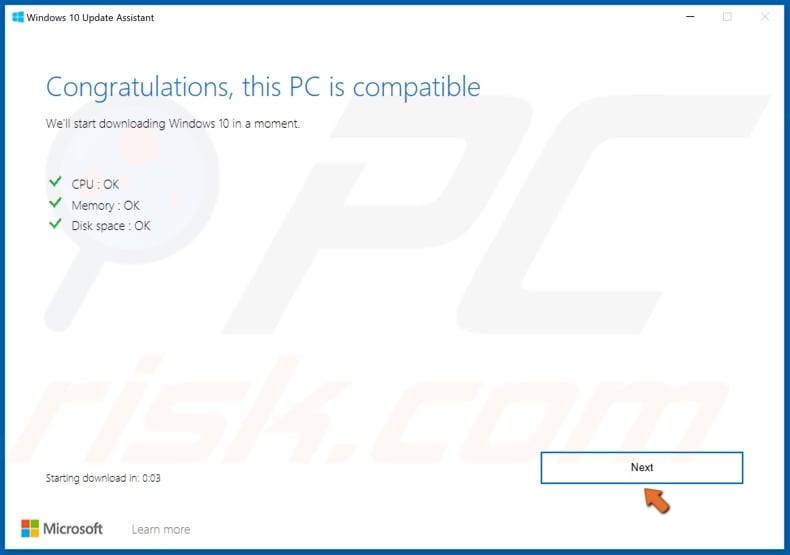
5. Click Next.
6. Allow Windows to update. The update process may take a while.
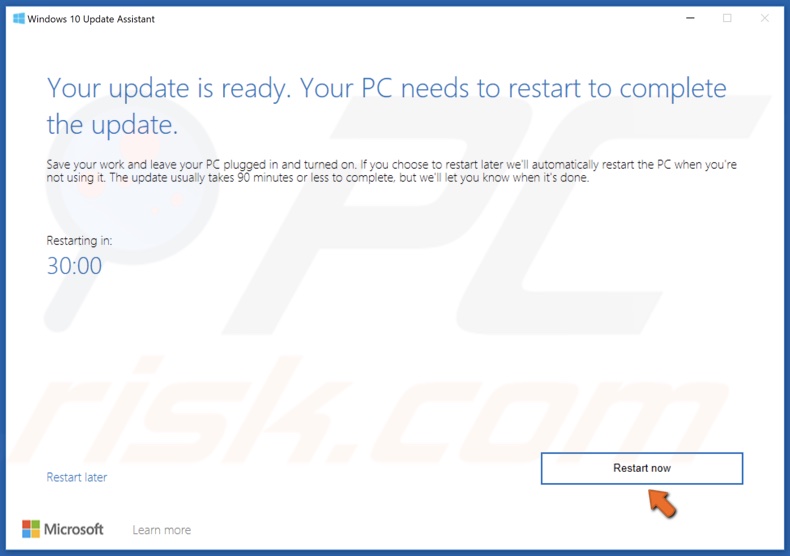
7. Click Restart now when prompted.
Solution 3. Clear Windows Update Cache Folder (Delete SoftwareDistribution Folder)
Since Windows can't delete and re-download updates once they're corrupted, you have to delete the contents of the cache (SoftwareDistribution) folder manually. Clearing the Windows Update cache requires you to stop the Windows Update Service (wuauserv) first. After stopping the service, you will delete all of the files inside the SoftwareDistribution Folder.
1. Hold down Windows+R keys to open Run.
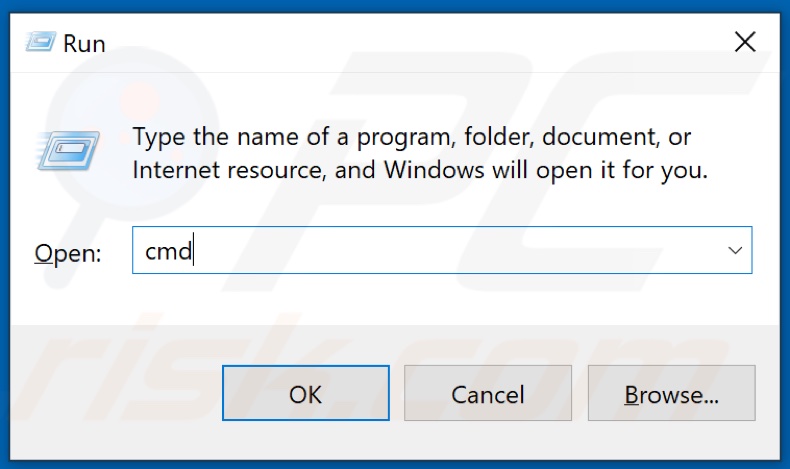
2. In the Run dialog, type in CMD and hold down Ctrl+Shift+Enter keys to open the elevated Command Prompt.
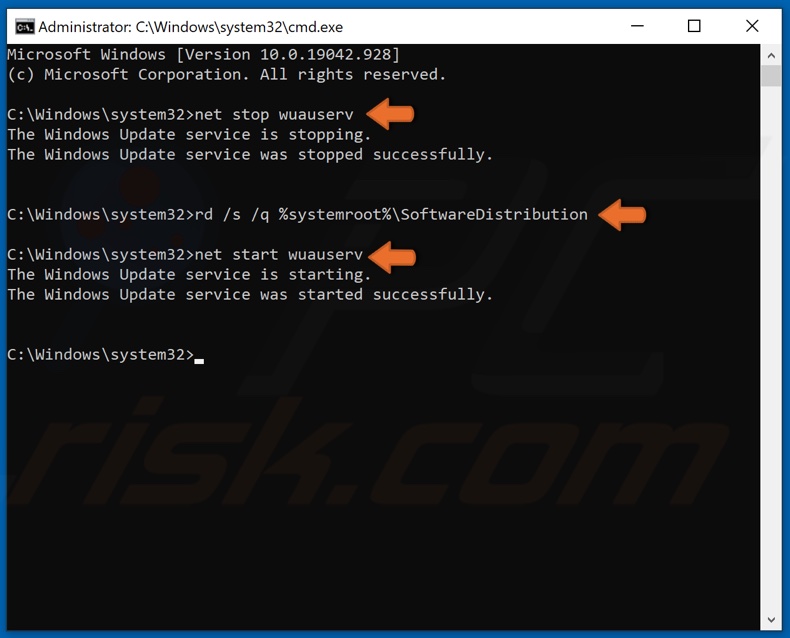
3. In the Command prompt window, type in net stop wuauserv and hit Enter.
4. Then, type in rd /s /q %systemroot%\SoftwareDistribution and hit Enter.
5. Lastly, type in net start wuauserv and hit Enter.
6. Close the Command Prompt and try updating Windows.
Solution 4. Run Deployment Imaging and Servicing Management (DISM) Scan
You can try running a DISM scan, which will identify and repair corrupted Windows system image files. As a result, repairing the image may fix error 0x80240034.
1. Hold down Windows+R keys to open Run.

2. In the Run dialog, type in CMD and hold down Ctrl+Shift+Enter keys to open the elevated Command Prompt.
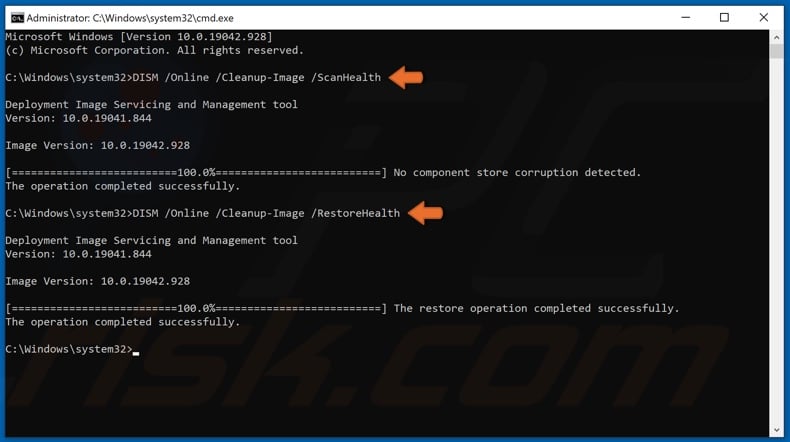
3. Then, type in DISM /Online /Cleanup-Image /ScanHealth in the Command Prompt window, and hit Enter.
4. Lastly, type in DISM /Online /Cleanup-Image /RestoreHealth and hit Enter.
5. Restart your PC and try updating Windows.
Solution 5. Run System File Checker (SFC) Scan
Windows built-in System File Checker is a tool designed to identify corrupted or missing system files and then download new files from Microsoft. Therefore, running an SFC scan may fix error 0x80240034.
1. Hold down Windows+R keys to open Run.

2. In the Run dialog, type in CMD and hold down Ctrl+Shift+Enter keys to open the elevated Command Prompt.
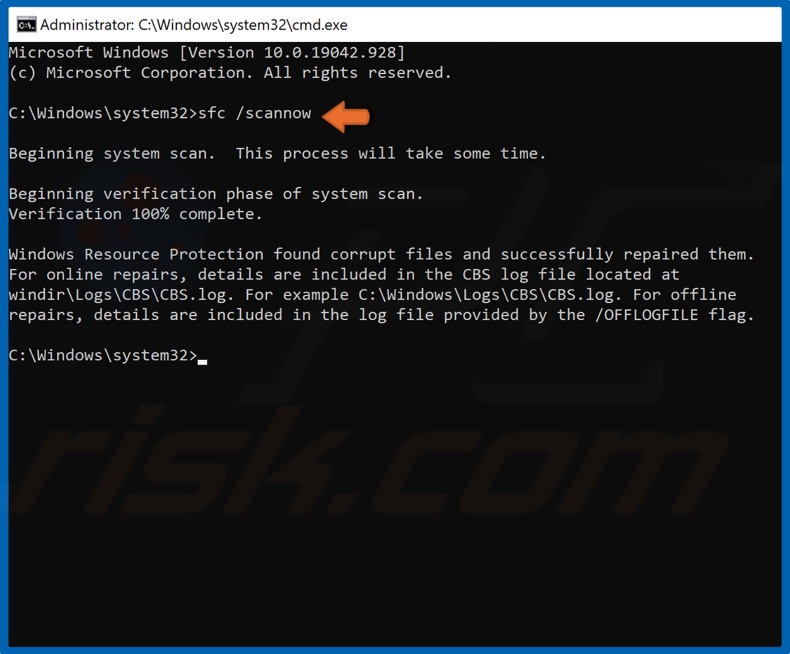
3. In the Command Prompt window, type in SFC /Scannow and hit Enter.
4. Restart your PC and try updating Windows.
Solution 6. Reset Windows Update Components
1. Hold down Windows+R keys to open Run.

2. In the Run dialog, type in CMD and hold down Ctrl+Shift+Enter keys to open the elevated Command Prompt.
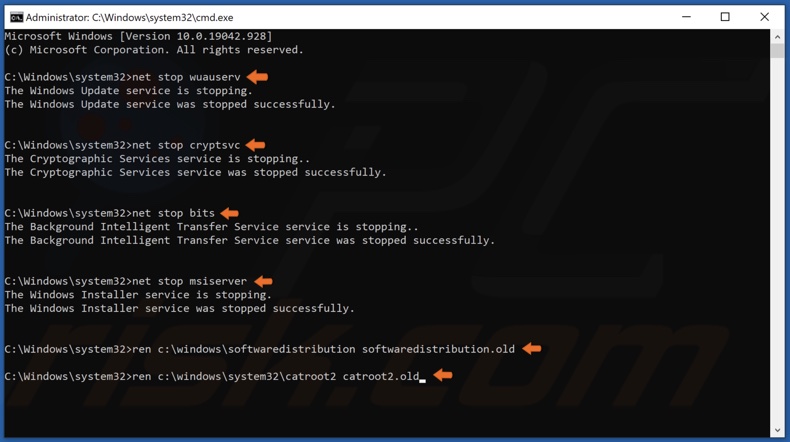
3. In the Command Prompt window, type in the commands below, and hit Enter after entering each one:
- net stop wuauserv
- net stop cryptSvc
- net stop bits
- net stop msiserver
Then, you can rename the SoftwareDistribution and Catroot2 folders.
4. Type in ren C:\Windows\SoftwareDistribution SoftwareDistribution.old and hit Enter.
5. Then, type in ren C:\Windows\System32\catroot2 Catroot2.old and hit Enter.
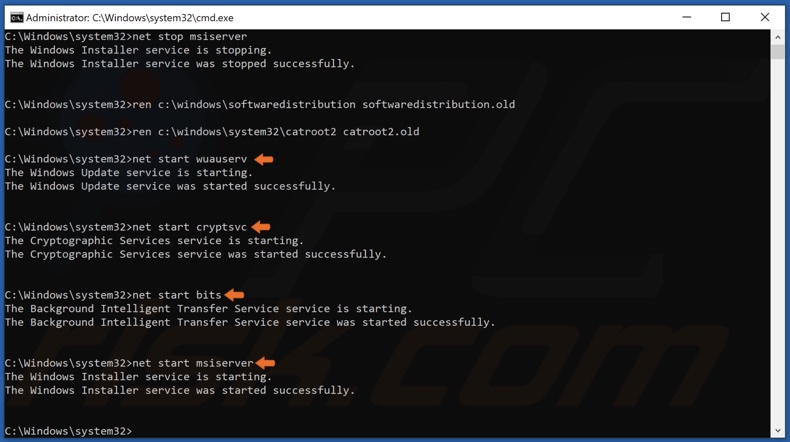
6. Type in the commands listed below, and hit the Enter key after entering each one to restart the previously stopped services:
- net start wuauserv
- net start cryptSvc
- net start bits
- net start msiserver
7. Now try updating Windows.
Share:

Rimvydas Iliavicius
Researcher, author
Rimvydas is a researcher with over four years of experience in the cybersecurity industry. He attended Kaunas University of Technology and graduated with a Master's degree in Translation and Localization of Technical texts. His interests in computers and technology led him to become a versatile author in the IT industry. At PCrisk, he's responsible for writing in-depth how-to articles for Microsoft Windows.

▼ Show Discussion